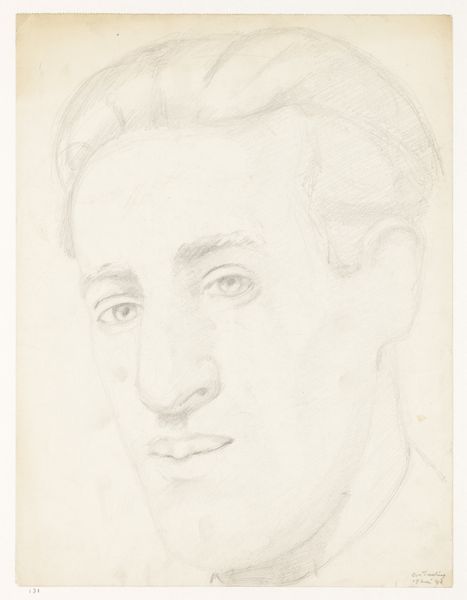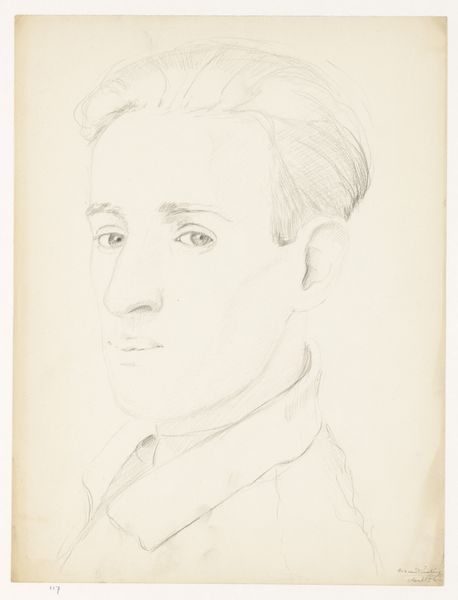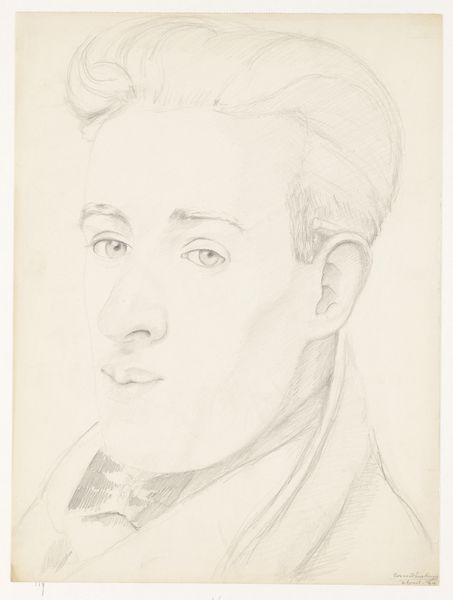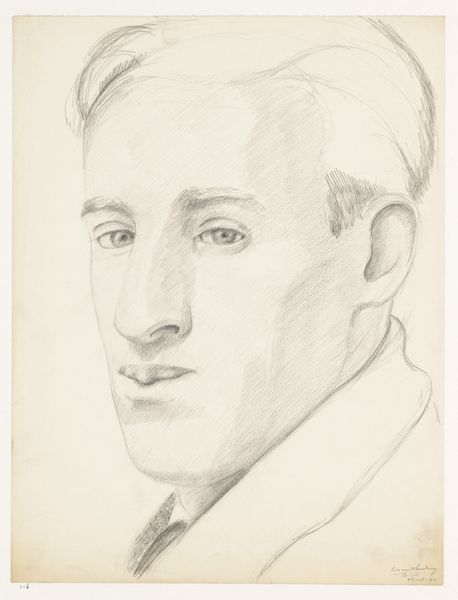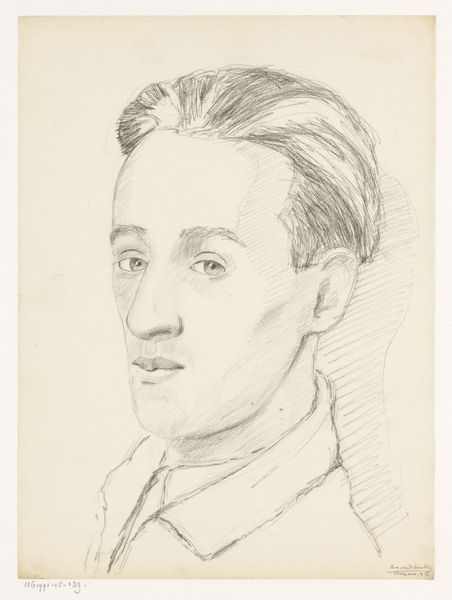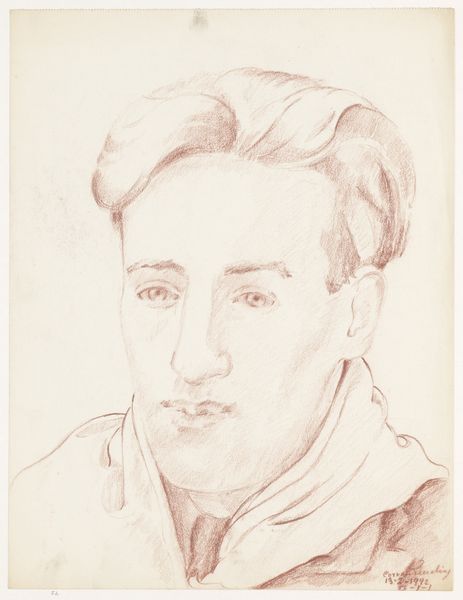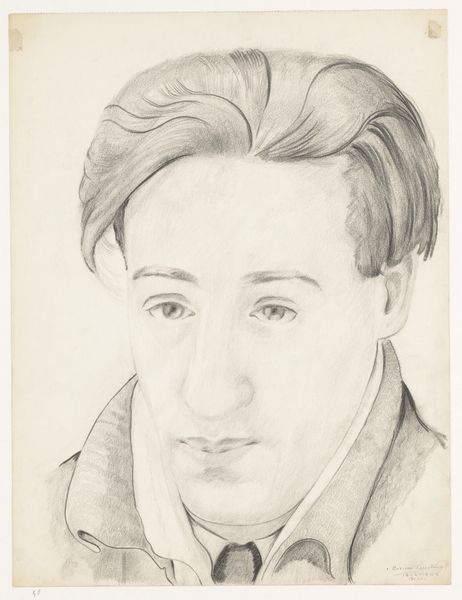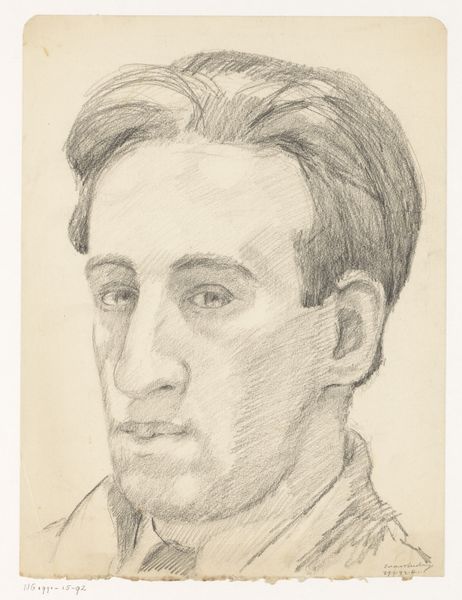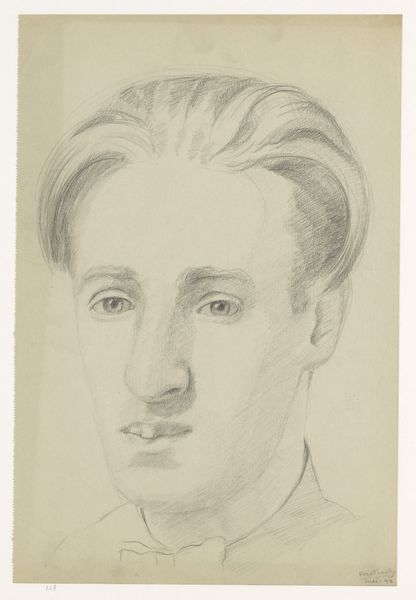
drawing, pencil
#
portrait
#
pencil drawn
#
drawing
#
self-portrait
#
caricature
#
figuration
#
pencil drawing
#
pencil
#
portrait drawing
#
portrait art
#
realism
Dimensions: height 35.5 cm, width 27.0 cm
Copyright: Rijks Museum: Open Domain
Curator: This drawing, rendered in pencil, is titled "Self-Portrait with Bow Tie: B-1-1" It was created in 1942 by Cor van Teeseling and is held here at the Rijksmuseum. What's your initial reaction to this piece? Editor: It strikes me as a bit unsettling. The almost photographic realism coupled with a slight caricature quality creates an unsettling feeling. Curator: It’s interesting you mention the unsettling feeling. Consider the context – this work was created during the height of the Second World War. Self-portraits, during times of conflict and upheaval, can often be acts of asserting identity and control in chaotic environments. The bow tie seems like an odd accessory given the gravity of the period, doesn’t it? Editor: Precisely! The formal bow tie juxtaposed with the likely anxieties of 1942 creates a fascinating tension. It raises questions about performance, the image one projects to the world versus the inner self during times of duress. The precision of the drawing also speaks to the artist's control of self. Curator: And thinking about the accessibility of materials during the war. Pencil and paper would have been relatively easy to obtain, even under occupation. This might have been, in part, a pragmatic choice. Self-portraiture allows an artist complete autonomy, using readily available materials. This is an idea I often apply to socially excluded artists too, since their possibilities for work were often curbed by inaccessibility. Editor: I agree. There's a resourcefulness and also a powerful assertion of selfhood when an artist uses what's available to them, especially in conditions where many freedoms were withheld or limited. This work speaks, silently but profoundly, about resilience and identity formation within the confines of history. Curator: Thank you for your insights. Thinking about it now, seeing his portrait helps me frame the political era that he lived in, and better helps me conceptualize the effect of societal norms during World War II. Editor: Likewise, revisiting van Teeseling's self-portrait underscores how artistic choices, when interrogated through intersecting lenses of history, identity, and power, reveal powerful narratives of survival and resistance.
Comments
No comments
Be the first to comment and join the conversation on the ultimate creative platform.

